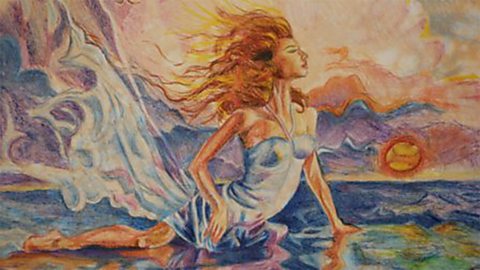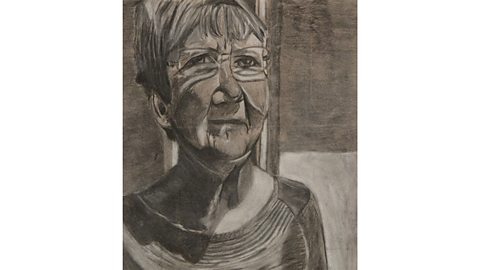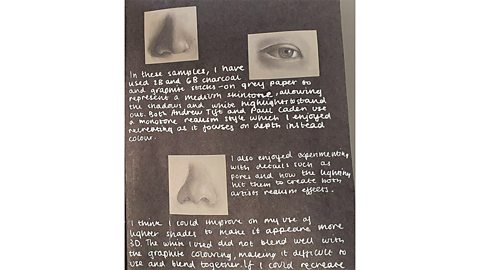Pencils, charcoal and graphite
Types of pencil
Pencils come in a range of hardness:
- °Őłó±đĚýH range is hard and light, and useful for design or technical drawings.
- °Őłó±đĚýB range is soft and dark, and more suitable for shading and tonal drawings.
- B stands for Black and each number indicates the darkness of the pencil, for example 2B is twice as dark as B. 4B is four times darker than B.
- The H range works the same way - 2H is twice as hard as H, 4H is four times as hard.

Drawing with coloured pencils
Coloured pencils can be blended on the page and their toneHow light or dark something is. Tones could refer to black, white and the grey tones between, or how light or dark a colour appears. can be changed by adding pressure. Coloured pencils are great for detailed pieces of work as they can be kept sharp.
Some coloured pencils are water soluble - water can be brushed over them to blend colours. Water-soluble pencils are usually softer than ordinary coloured pencils and will go blunt more quickly.
Click through the slideshow for examples of coloured pencil drawing:

Image caption, An example of a coloured pencil artwork
Image caption, A cityscape including a bridge drawn in coloured pencil
1 of 2
Drawing with charcoal
Charcoal is good for creating fast and expressive drawings. It gives both soft and strong lines depending on how firmly the charcoal is pressed down onto the surface. Charcoal smudges easily so a fixativeA substance used to hold something in position or to prevent it mixing with other materials such as water such as hairspray can be used to keep it in place once a drawing is finished.
Charcoal is good for large-scale pieces where accurate, small details are less important.
Click through the slideshow for examples of different types of charcoal drawing:

Image caption, A portrait drawn in charcoal
Image caption, A horse drawn with charcoal
Image caption, A section of a landscape drawn with charcoal
1 of 3
Drawing with graphite
Graphite sticks are harder than charcoal and can be used for more detail. They are like pencils but without the wooden casing. They are useful for shading, blending and filling larger spaces.

Artists can also use graphite powder - graphite ground into a fine, smooth powder. It can be applied using a range of tools, including fingers or brushes. Graphite powder can be smudged easily and built up in thin layers to make darker tones.